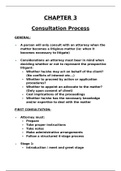Summary
PUBLIC DEVELOPMENT AND MANAGEMENT 222 FULL SEMESTER 1 SUMMARY
- Institution
- Stellenbosch University (SUN)
This is a summary of the entire semester 2 for PDM 222. It includes all the information from the lectures, textbook and hints the lecturer gave in class. It also includes all the diagrams with a break down and definitions. It is in very easy to understand and simple english.
[Show more]












